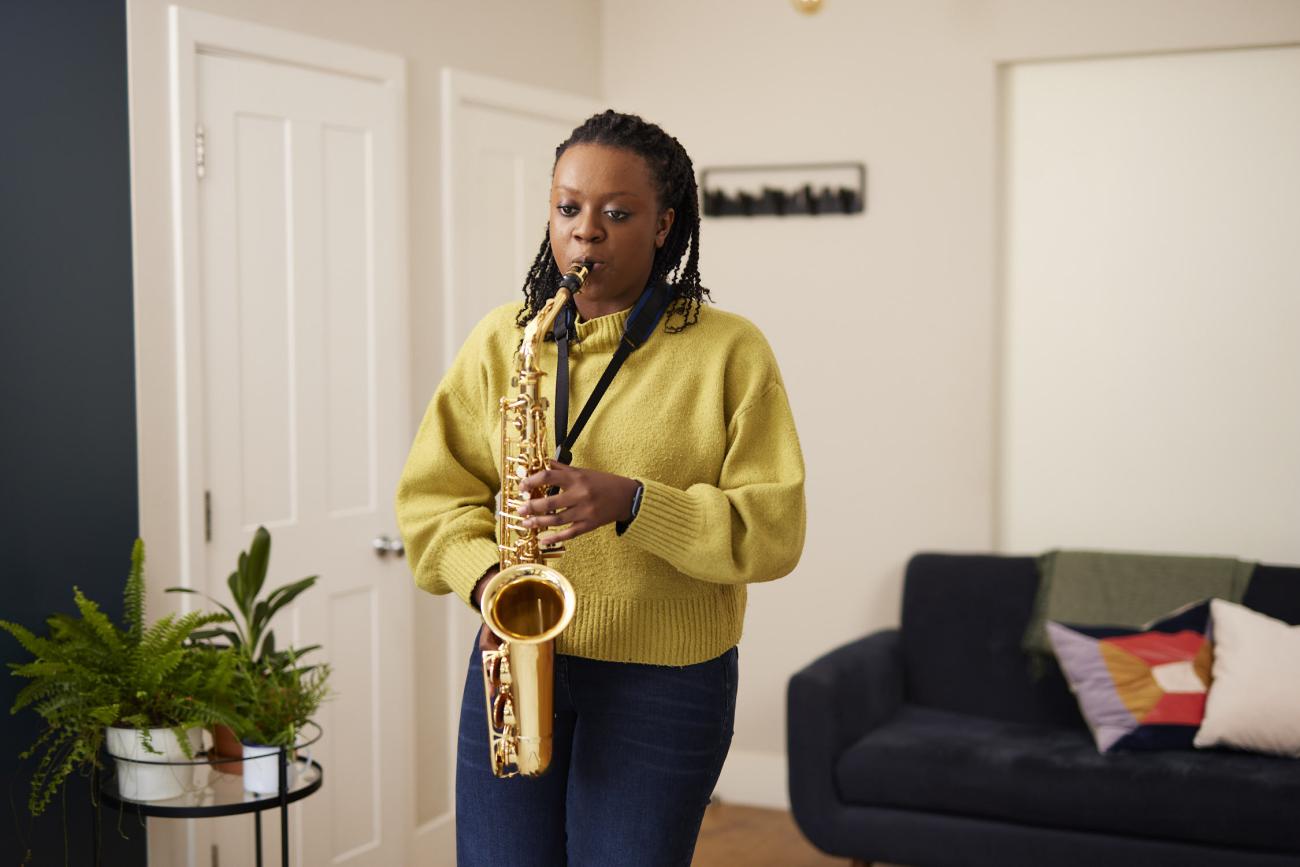Jazz Ensembles
About Jazz Ensemble exams
We’ve designed our Jazz Ensemble exams to encourage group music-making within the broad area of jazz. These are face-to-face exams, available at three levels – Initial, Intermediate and Advanced.
We can only offer Jazz Ensemble exams in Australia, India, Ireland, New Zealand, Singapore and the UK and at Private Visits.
In the exam the group performs a programme of pieces as listed below. You can choose your own jazz repertoire, anything from New Orleans to free and ECM, and from swing and bebop to Latin and rock-influenced styles. All your pieces must include improvisation.
Initial - two pieces: a 12-bar blues and a standard.
Intermediate - three pieces: a 12-bar blues, a standard and a third item of the group’s own choice, covering a range of tempos and moods.
Advanced - three or more pieces, including: a 12-bar blues and a standard, covering a range of tempos and moods.
Each piece must include at least one substantial improvised solo or a number of shorter ones, at any point in the piece. Arrangements where solos are written out are not acceptable.
Every piece should also incorporate interactive comping and/or improvising from the rhythm section.
The ensemble can decide how many soloists improvise. Solos should be shorter where a number of improvisers are involved, but if there is just one soloist a longer improvisation may be appropriate.
We encourage performers to be creative within the style and to demonstrate flexibility and on-the-spot decision-making in their choice and presentation of material.
Aim to position players to allow eye-contact and so that they can hear each other comfortably.
If you want to, you can make short (5 to 10 second) announcements as long as the overall length of the performance is within the time limits provided in the Jazz Ensemble regulations below.
If you are using amplification, it is your responsibility to ensure that all equipment works, that spare leads and other equipment are available and that the exam starts and finishes on time
The examiner awards an overall grading for the performance and provides detailed written comments on the mark form covering the accomplishments of the group and their strengths and weaknesses as a jazz ensemble.
- A (Distinction) - an outstanding performance with little reservation
- B (Merit) - a very good performance but with some reservation
- C (Pass) - a competent performance but with significant reservation
Examiners assess the overall musical outcome in terms of:
- Control of pitch and note placement
- Understanding and communication of musical vocabulary and style
- Performance and flexibility of the head and the improvisation
- The contribution of each member to the overall performance and their response to the other group members
- Understanding and response to the leader’s instructions (where a leader is present)
- Unanimity of musical outlook
- Balance
- Contrast
- Blend
In broad terms, the following instrumental skill levels are expected:
- Initial – Grades 3 to 4
- Intermediate – Grades 5 to 6
- Advanced – Grade 7 to 8
Initial and Intermediate levels – the marking criteria for solo Jazz exams provide further guidance. The statements given for Grades 1 to 4 are broadly applicable to Initial level and the statements for Grade 5 are broadly applicable to Intermediate level.
Advanced ensembles at Pass level – need to show overall technical security with evidence of musical awareness, such as reasonably secure dynamics, texture, speed and character of the groove. Phrasing and embellishments will be generally stylish, the ensemble balanced, and some account will have been taken of the harmonic, melodic and rhythmic possibilities within the given material.
Advanced ensembles at Distinction level – need to show a high level of technical assurance combined with musically authoritative playing in which the sense of performance is both instinctive and communicative to a high degree. There will be varied and stylish dynamics and texture, crisp and appropriate phrasing, imaginative embellishments with a sense of flair, well-paced solos and comping that inventively explore all the elements within the given material, and completely unified and convincing ensemble playing with a flexible response to individual contributions.

Please read the following Jazz Ensemble regulations before booking and taking an exam. You should also read our main exam regulations.
A special entry form should be completed for this subject. See ‘More information’ at the bottom of the page for details.
Groups comprising any combination of two or more instrumentalists, or a vocalist with one or more instrumentalists, may enter for examination.
- Initial: For performers of approximately Grade 3–4 standard
- Intermediate: For performers of approximately Grade 5–6 standard
- Advanced: For performers of approximately Grade 7–8 standard
The exam should last about:
- 12 minutes for Initial level
- 18 minutes for Intermediate level
- 25minutes for Advanced level.
All groups will be allowed an additional five minutes for setting up and tuning.
All groups have a free choice of repertoire, which may include items from the earliest to contemporary jazz, straight or swing, but within the following basic requirements:
- Initial: Two pieces, comprising a 12-bar blues and a standard
- Intermediate: Three pieces, comprising a 12-bar blues, a standard and a third item of the group’s own choice, all of which make up a programme covering a range of tempos and moods
- Advanced: Three or more pieces, including a 12-bar blues and a standard, covering a range of tempos and moods
The examiner will award an overall grading rather than a mark, taking into account the following broad aspects of the performance:
- Control of music elements
- Understanding and communication of musical vocabulary and style
- Organisation and flexibility of improvisation and its impact on such matters as unanimity of outlook, balance, contrast and blend
A (Distinction): An outstanding performance with little reservation
B (Merit): A very good performance, but with some reservation
C (Pass): A competent performance, but with significant reservation
F (Fail): Failure to reach the standard required to pass
The examiner’s notes and grading are sent to the applicant named on the entry form, and certificates are issued for each member of a group obtaining a C grading or above.
Booking Jazz Ensemble exams
To book, please download and complete the entry form available on this page and send it to us with your payment.
To take a Jazz Ensemble exam you will need to organise a Private Visit as we cannot offer these exams at our Public Venues.

